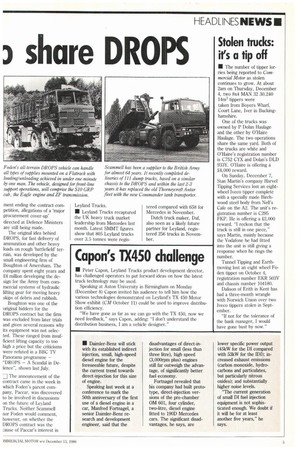• Daimler-Benz will stick with its established indirect injection, small,
Page 7

If you've noticed an error in this article please click here to report it so we can fix it.
high-speed diesel engine for the foreseeable future, despite the current trend towards direct-injection for this size of engine.
Speaking last week at a conference to mark the 50th anniversary of the first use of a diesel engine in a car, Manfred Fortnagel, a senior Daimler-Benz research and development engineer, said that the disadvantages of direct-injection for small (less than three litre), high speed (3,000rpm plus) engines still far outweigh the advantage, of significantly better fuel economy.
Fortnagel revealed that his company had built prototype, direct-injection versions of the pre-chamber OM 601, four cylinder, two-litre, diesel engine fitted to 190D Mercedes cars. The significant disadvantages, he says, are lower specific power output (45kW for the DI compared with 53kW for the IDD; increased exhaust emissions (carbon monoxide, hydrocarbons and particulates, but particularly nitrous oxides); and substantially higher noise levels.
"The current generation of small DI fuel injection equipment is not sophisticated enough. We doubt if it will be for at least another five years," he says.












































































